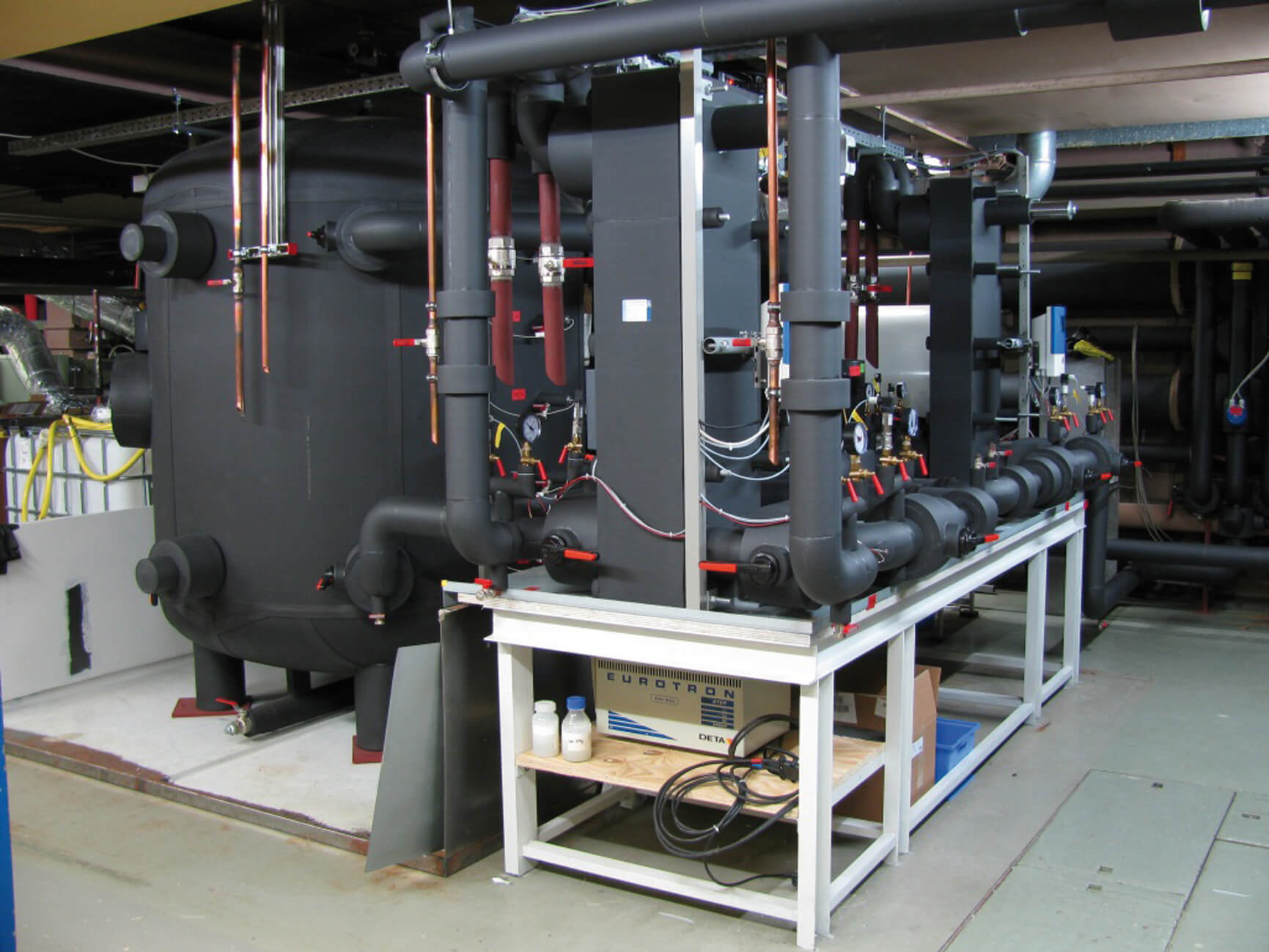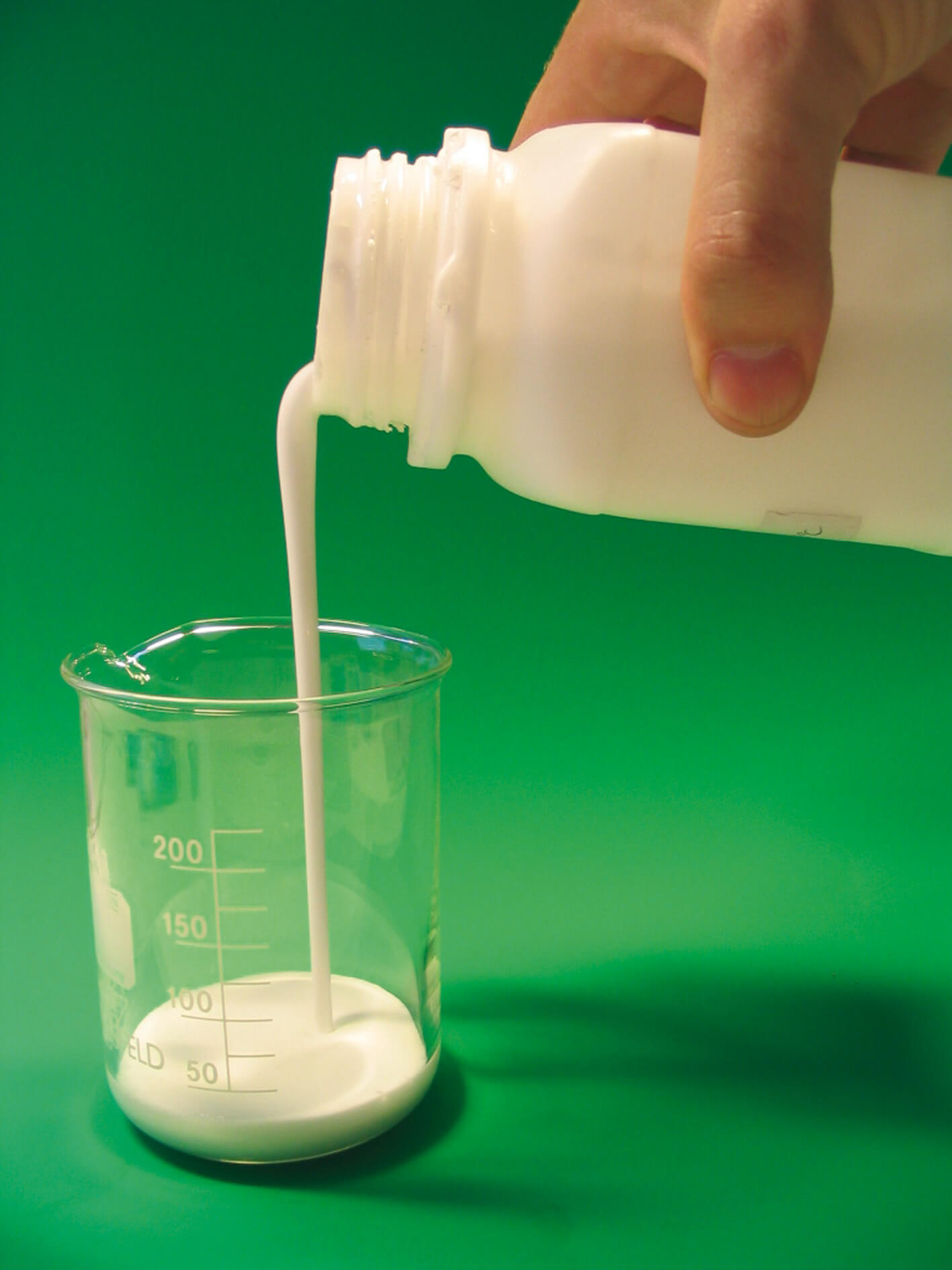| Duration: | October 2013 - September 2017 |
| Contracting Authority / Sponsors: | German Federal Ministry of Economic Affairs and Energy (BMWi) |
| Project Partners: | Sasol Germany GmbH, Imtech Deutschland GmbH |
KOLAN – Economical Latent Heat Storage for Cooling Processes
In thermal storage systems, the principal storage medium up to now has been water. For cold storage applications, often only small temperature differences are possible, making large storage volumes necessary. In this case, phase change materials (PCMs) are particularly suitable as storage material. Due to their quasi-isothermal heat or cold storage capacity, they have a high storage density over small changes in temperature. By adding a PCM to a heat-transfer fluid, phase change slurries (PCSs) can be transported from one location to another by pumping, independent of their state of matter. As a result, the capacity and the power of a storage system can be decoupled and, therefore, dimensioned independently.
In this project both cost-effective phase change slurries (PCS) having high storage capacity and good stability as well as PCM storage systems based on macro-encapsulated PCM or compound materials are developed.
System simulations are carried out in order to define the material properties of the PCM and PCM-slurries and to estimate the potential of newly developed storage technologies. PCMs are synthesized so that their material properties, like melting temperature and enthalpy, exactly match the requirements of the application. The materials shall be used for cooling, i.e. pre-cooling and pre-heating, in the building sector as well as for cooling in technical applications, e.g. manufacturing machines. The successfully developed slurry will be tested and evaluated under real conditions in a pilot system at Imtech Deutschland GmbH.
The main goal is to decrease the energy consumption needed for cooling and thus contribute towards achieving the climate protection targets.

